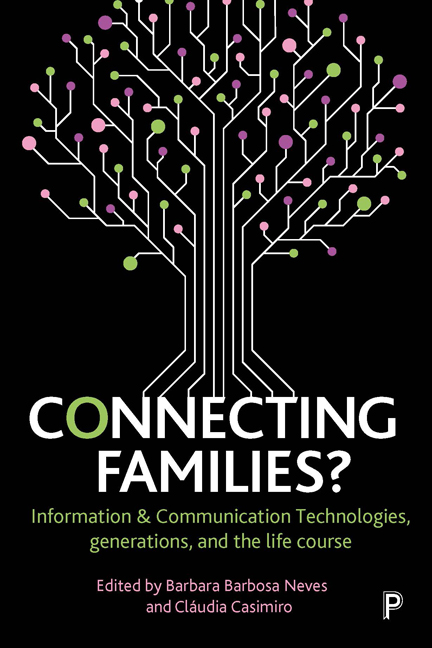Book contents
thirteen - ‘Wherever you go, wherever you are, I am with you … connected with my mobile’: the use of mobile text messages for the maintenance of family and romantic relations
Published online by Cambridge University Press: 22 April 2022
Summary
Relationship maintenance in the age of mobile communication
Relationship maintenance is a fundamental need of all humans (Baumeister and Leary, 1995). Keeping in touch with family members, romantic partners, close friends, and even acquaintances forms one of the main motivations for the everyday exchange of personal information. Individuals want to know what happens in the lives of their loved ones. Conversely, individuals want to inform other people about their own everyday experiences, thoughts, and feelings. Interpersonal communication forms the basic condition for any form of relationship maintenance. In the past, such everyday interactions have been mainly limited to face-to-face communication. The introduction of various forms of communication media has changed forms of interaction (de Souza e Silva, 2006; Ling and Yttri, 2002; Urry, 2007). Without going into detail about the usage habits of written communication sent via conventional mail or changing interaction habits because of landline telephony, this chapter addresses new communication modes in the age of mobile phones with internet connections. The so-called smartphones change communication practices in three aspects: they stimulate mobilization, flexibility, and individualization of interpersonal communication (de Souza e Silva, 2006; Ling and Yttri, 2002; Urry, 2007).
Mobile phones set aside the limitations of landline telephony by making individual communication available independent of one's current location. One does not have to stay at home to call another person or to receive a call because people's smartphones are always with them. This mobilization of interpersonal communication creates flexibility of interactions and everyday management (Ling and Yttri, 2002).
It is not only the location of making or receiving a call that becomes more flexible because of mobile phones but also the modes of communication, especially with the new option of computer-mediated communication that becomes available because of smartphones with internet connections. A smartphone offers not only the ability to make a telephone call but also the opportunity to exchange text messages with others or to use one of the main forms of computer-mediated communication, such as writing an email, commenting on social networking sites, or even sending (audiovisual) messages via a mobile messaging application.
- Type
- Chapter
- Information
- Connecting Families?Information and Communication Technologies, Generations, and the Life Course, pp. 237 - 254Publisher: Bristol University PressPrint publication year: 2018



